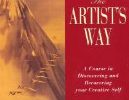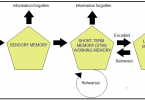Photography can combine both a skill and a talent, and can be used in more careers than you may first think of. In a purely photographic career, this would cover roles such as portrait photography, weddings, animals and landscapes, whereas there are other careers where photography only constitutes one part of the role. Careers like this include journalism, forensics, sports fixtures and the media and scientific photography.
What do you need?
Regardless of the career choice, there are two main elements that are pertinent to all. The technical ability and knowledge of how to manipulate the camera function in order to achieve the desired effect and outcome is paramount such as controlling the exposure, focus, shutter speed and composition. As cameras vary in the functions that they possess, it is important to take the time to become used to the particular camera that you are using in order to get the most out of it, which is made easier if you are using your own camera. The second element is knowing how to manipulate the photo using the relevant software. The scope of software varies greatly, but most up-to-date software enables the user to edit photographs in terms of size, enhancements and adjustments. Specific software may be necessary to edit certain types of photograph, such as scientific software that is able to capture and edit photographs at a micro level.
Depending on the type of photography, there may well be a focus on certain skills more than others. For wildlife photographers, macro photography is widely used to capture small detail and close-ups, and this can require significant patience and exquisite timing. Motion photography can also reveal the exact ways that animals move around in their natural environment. This type of photography, alongside landscapes, takes place mainly in the outdoors which can be problematic. The elements provide the first obstacle in not only having to protect your equipment, but also how to take the best photo. Glaring sun can cause problems with exposure, as well as shadows being formed; rain can cause photos to look dull and grey, and changing daylight can cause problems with white balance. Another obstacle to consider if you are on a particularly long shoot, is how to look after yourself outdoors, such as keeping warm, making shelter and knowing what is potentially dangerous. As well as trying to remain undetected by animals that you want to photograph, you may also need to be undetected by animals at night-time that can pose a threat.
For fashion photography, the photographer needs to set and capture a mood, display creativity, and have a good eye for detail. Not only this, fashion photographers will also need to work well with models and clients. Clients will direct what they want produced, and the photographer will aim to achieve this with either a clothing range, or by directing models with pose instructions. As fashion is such a competitive industry, photographers must endeavour to be innovative and artistic, work well under pressure, and create striking images tailored to the particular client. To do this, there must a significant interest and knowledge in fashion trends, as well as current trends in fashion photography and art.
Taking photographs of children can require time and patience depending upon the age of the child, and therefore it is important to make the child feel comfortable and relaxed, especially if they are on their own in the shots. This could mean letting the child see their photos, taking a few shots with the camera if this is applicable, getting to know them a little, and making the shoot as fun as possible. It is also better if young children are accompanied by someone they know as this can also make them feel more relaxed. Trying to get a specific pose and facial expression of a child can be difficult, and therefore producing many shots in succession in Burst Mode can be easier. For close-ups of children it is easier to get down to their level, and this will also help you to achieve more intimate shots. On a separate note, for any professional photographer, it is advisable to gain a DBS check or police certificate, depending on the country, as a background check to show clearance from any barred lists such as the Sex Offenders List, as well as showing evidence for any criminal activity.
Marketing
One aspect for professional photographers that is particularly important, especially if you own your own business, is that of marketing. The easiest way to market yourself or your business is to develop a portfolio, and to then start using social media such as Twitter, Facebook, LinkedIn, Xing and Tumblr. This is also a good way to start gaining a customer base, and to try to promote word of mouth. Networking is also a must, as you may find that you can become associated with other companies that may promote your services, such as a Wedding Dress Company promoting you as a Wedding photographer if that is your area of interest. You can also find out more about attending functions or events where you can promote your services. Marketing requires a good level of both written and verbal communication. Effective writing should be clear, concise and use emotive language where appropriate, and effective verbal communication should be engaging, interesting, persuasive and inviting. Non-verbal communication is also important such as eye contact, gestures, and posture.
Photography may also be a skill that you use for a resume/CV as it can highlight an artistic or creative nature, if this is not an everyday part of your job. Although photographers can be trained to Degree Level, photography has become far more popular as a hobby, and as such, there are generally more workshops, lessons and training that are on offer, as well as online tutorials and educational Webinars. These can teach the basics of photography and how to use the features of your camera effectively, or can concentrate on specific elements such as using different angles, encompassing patterns and texture, symmetry and negative space.






Leave a Comment